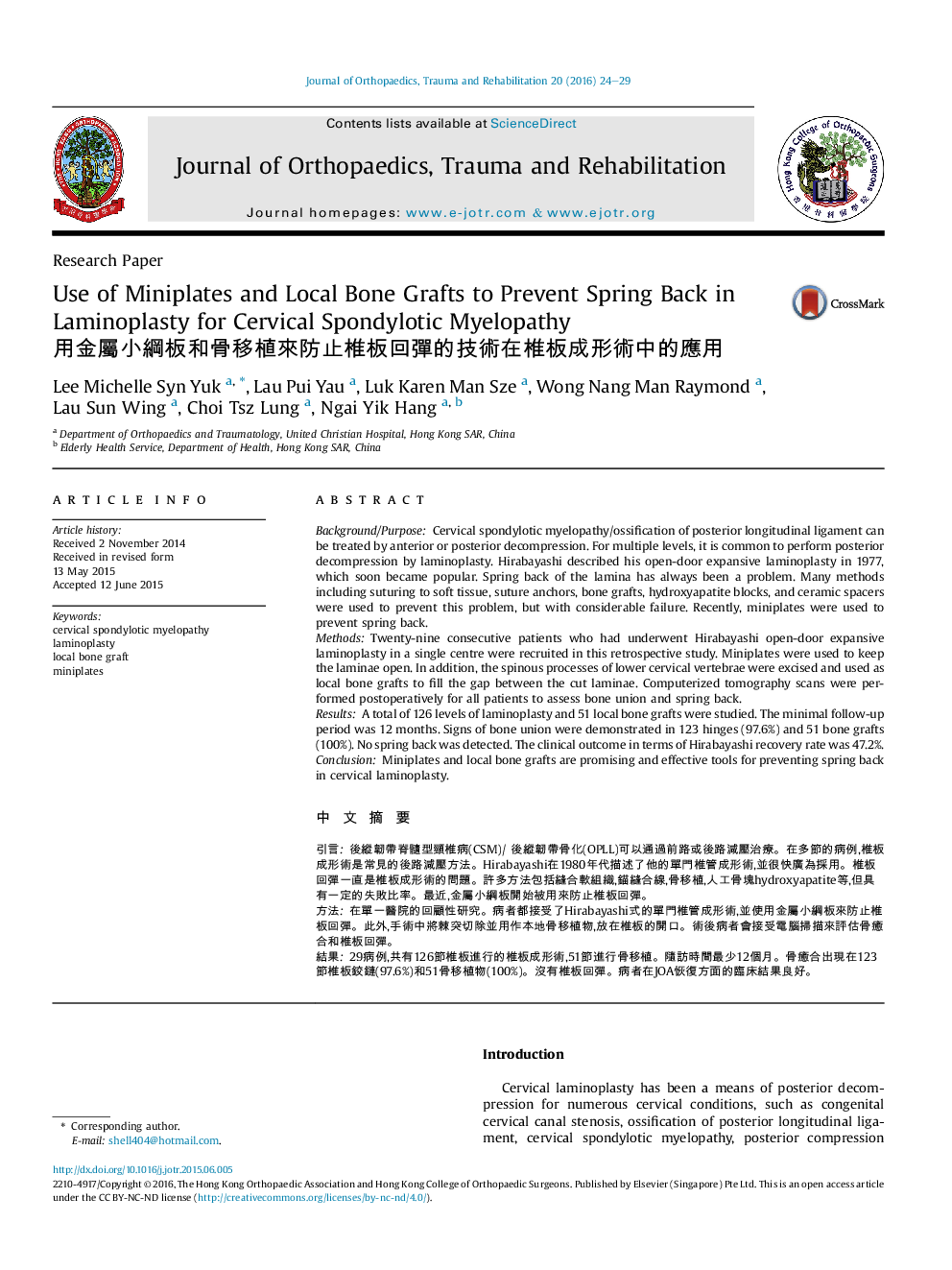| کد مقاله | کد نشریه | سال انتشار | مقاله انگلیسی | نسخه تمام متن |
|---|---|---|---|---|
| 4072537 | 1604667 | 2016 | 6 صفحه PDF | دانلود رایگان |

Background/PurposeCervical spondylotic myelopathy/ossification of posterior longitudinal ligament can be treated by anterior or posterior decompression. For multiple levels, it is common to perform posterior decompression by laminoplasty. Hirabayashi described his open-door expansive laminoplasty in 1977, which soon became popular. Spring back of the lamina has always been a problem. Many methods including suturing to soft tissue, suture anchors, bone grafts, hydroxyapatite blocks, and ceramic spacers were used to prevent this problem, but with considerable failure. Recently, miniplates were used to prevent spring back.MethodsTwenty-nine consecutive patients who had underwent Hirabayashi open-door expansive laminoplasty in a single centre were recruited in this retrospective study. Miniplates were used to keep the laminae open. In addition, the spinous processes of lower cervical vertebrae were excised and used as local bone grafts to fill the gap between the cut laminae. Computerized tomography scans were performed postoperatively for all patients to assess bone union and spring back.ResultsA total of 126 levels of laminoplasty and 51 local bone grafts were studied. The minimal follow-up period was 12 months. Signs of bone union were demonstrated in 123 hinges (97.6%) and 51 bone grafts (100%). No spring back was detected. The clinical outcome in terms of Hirabayashi recovery rate was 47.2%.ConclusionMiniplates and local bone grafts are promising and effective tools for preventing spring back in cervical laminoplasty.
中 文 摘 要引言後縱韌帶脊髓型頸椎病(CSM)/ 後縱韌帶骨化(OPLL)可以通過前路或後路減壓治療。在多節的病例,椎板成形術是常見的後路減壓方法。Hirabayashi在1980年代描述了他的單門椎管成形術,並很快廣為採用。椎板回彈一直是椎板成形術的問題。許多方法包括縫合軟組織,錨縫合線,骨移植,人工骨塊hydroxyapatite等,但具有一定的失敗比率。最近,金屬小綱板開始被用來防止椎板回彈。方法在單一醫院的回顧性研究。病者都接受了Hirabayashi式的單門椎管成形術,並使用金屬小綱板來防止椎板回彈。此外,手術中將棘突切除並用作本地骨移植物,放在椎板的開口。術後病者會接受電腦掃描來評估骨癒合和椎板回彈。結果29病例,共有126節椎板進行的椎板成形術,51節進行骨移植。隨訪時間最少12個月。骨癒合出現在123節椎板鉸鏈(97.6%)和51骨移植物(100%)。沒有椎板回彈。病者在JOA恢復方面的臨床結果良好。
Journal: Journal of Orthopaedics, Trauma and Rehabilitation - Volume 20, June 2016, Pages 24–29